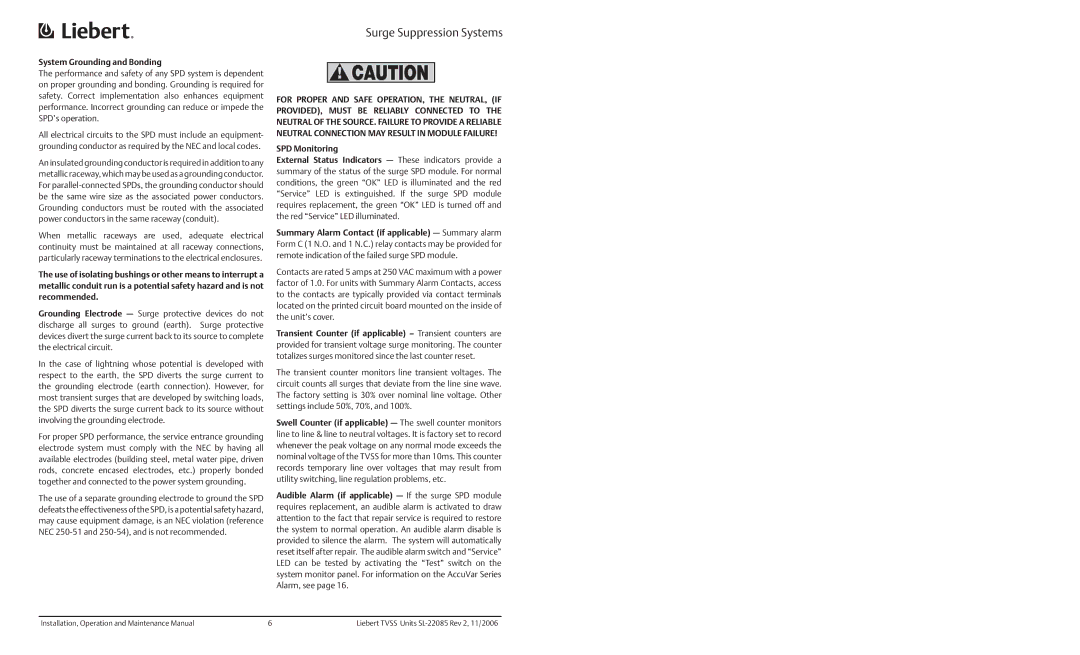PanelGuard Extension, LM, Interceptor II, ATF Series, SAD Hybrid Advantage specifications
The Liebert AccuVar is a cutting-edge power management solution designed to optimize and protect critical infrastructure. This system is well-known for its unique ability to provide variable voltage and current, ensuring that equipment receives the right level of power needed for optimal performance. One of its main features is the capability for advanced energy management, which aids in reducing operational costs and improving energy efficiency. This is particularly beneficial in environments where power consumption is a major concern.Another product in this domain is the PowerSure LPM/LPL Series. This series is specifically designed for high-performance applications, featuring a compact design that maximizes space efficiency without compromising on power quality. With excellent surge protection and state-of-the-art noise filtering technologies, the PowerSure series is perfect for protecting sensitive electronic equipment. Its real-time diagnostic capabilities allow users to monitor power quality continuously, which is crucial for both operational stability and preventative maintenance.
The Type SS is a reliable solution for mission-critical applications, featuring an advanced system architecture that ensures uptime and reliability. With high operating efficiency and low total harmonic distortion, the Type SS minimizes operational risk while enhancing system performance. Its modular design provides flexibility in scaling and upgrading systems according to the changing needs of the business.
The SAD Hybrid Advantage showcases a blend of traditional and innovative technologies, enabling an optimal balance between performance and reliability. This series employs a hybrid system that leverages both linear and switching technologies, offering superior load handling capabilities. Enhanced thermal management and intelligent control features ensure that the system operates efficiently, regardless of load variations.
Lastly, the ATF Series is engineered for robust protective capabilities and versatile application in challenging environments. With features such as integrated battery management and customizable configuration options, the ATF series is adaptable for various power needs. The system’s ease of installation and user-friendly interfaces make it highly accessible for IT and facility managers.
Overall, these power management solutions represent a significant leap forward in technology, offering businesses a wide range of features including efficiency, reliability, and adaptability in their power systems. Each series serves distinct applications, ensuring that there is a suitable solution for every critical infrastructure need.

